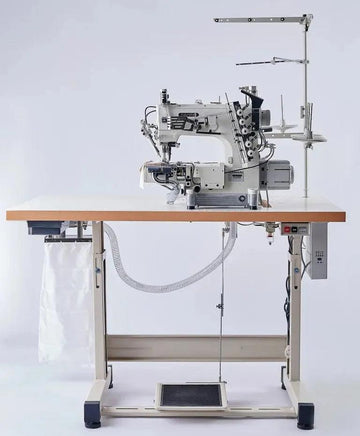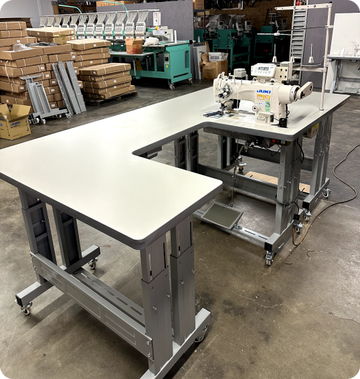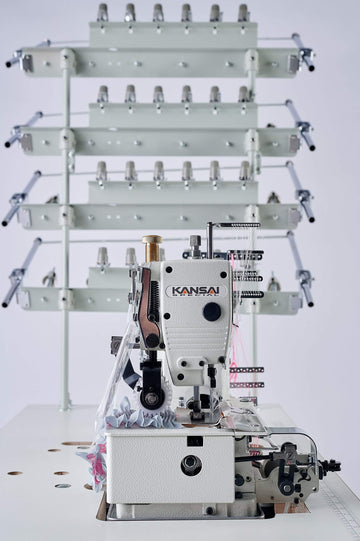The apparel industry remains one of the most resilient and innovative sectors of the global economy. For decades, clothing and fashion manufacturing have combined craftsmanship, technology, and market insight to deliver steady financial performance. In 2025, investing in the apparel industry continues to attract both seasoned investors and new entrants who seek high potential returns in a dynamic market.
Why It’s Good to Invest in the Apparel Industry
Many investors ask, “Is it good to invest in the apparel industry?” The short answer is yes—if done strategically. The U.S. apparel sector, particularly in regions such as California, Los Angeles, and South El Monte, has seen consistent growth driven by consumer demand for both quality and sustainability. This is not just a trend but a long-term shift toward conscious consumption and domestic production.
The U.S. market’s unique advantage lies in its blend of industrial infrastructure and design innovation. Factories in Los Angeles, for instance, have invested heavily in industrial sewing machines, high-performance fabric technology, and improved production tables to boost output while maintaining exceptional quality. These improvements directly impact the ROI apparel investors can expect.
When evaluating your investment objectives in the apparel industry, it’s essential to align them with the current consumer landscape. Buyers now value locally produced garments, transparent sourcing, and long-lasting materials backed by warranty. These factors enhance customer loyalty—an important metric that influences the apparel industry investment return.
The ROI of the Apparel Industry in the U.S.
Data from manufacturing reports and trade organizations show that the ROI of apparel industry of the U.S. has remained competitive, averaging steady single- to double-digit annual returns depending on niche, scale, and operational efficiency. For investors focused on tangible goods, few markets offer such a strong combination of stability and innovation.
For example, in Los Angeles, smaller commercial producers often specialize in premium denim, streetwear, and luxury basics—segments known for their high profit margins. In South El Monte and nearby industrial zones, scalable manufacturing facilities integrate commercial sewing equipment, automated cutting tables, and smart machinery to reduce labor costs and improve consistency. These advancements mean production can be both cost-efficient and responsive to demand.
In other words, when you invest in the apparel industry, you are not simply backing a factory—you are investing in an evolving ecosystem of technology, design, and sustainability that supports continuous revenue growth.
Read Also: Discover the Best Types of Industrial Sewing Machines and Their Uses
Key Investment Objectives in the Apparel Industry
Before allocating funds, define your investment objectives in the apparel industry clearly. Here are the top priorities every investor should consider:
Profitability and ROI Apparel Metrics
Evaluate the gross margins of target manufacturers or brands. Sustainable ROI apparel benchmarks in the U.S. typically range from 10% to 25%, depending on specialization and production scale.
Quality Assurance and Warranty Systems
A strong warranty policy signals confidence in product quality and lowers return risks. Many successful apparel producers in California emphasize quality control at every step—from fabric sourcing to final stitching.
Industrial and Commercial Capabilities
Assess whether the business uses industrial sewing machines, cutting-edge fabric technologies, and ergonomic work tables to optimize workflow. These details determine both productivity and scalability.
Sustainability and Local Manufacturing
Consumers increasingly support domestic producers using eco-friendly materials. Brands that can prove local production—especially in Los Angeles or South El Monte—often command higher retail prices and stronger brand loyalty.
Market Diversification
Apparel investments perform best when diversified across multiple product lines or client segments, such as sportswear, workwear, or luxury items.
By aligning these goals with a strategic entry point—whether it’s manufacturing, distribution, or retail—you increase your chances of achieving strong, sustainable apparel industry investment returns.
Technology and Modernization: The Core of ROI Growth
In recent years, the apparel sector has seen rapid digitization. Companies now leverage 3D design, automated pattern cutting, and AI-based demand forecasting to minimize waste and optimize fabric use. Factories equipped with modern industrial sewing machines can double production without doubling costs. This translates into measurable gains in ROI apparel performance.
Investors who prioritize modernization often see faster returns. In Los Angeles’ industrial corridors, for example, facilities that upgraded their commercial machinery and implemented digital inventory systems reported 15–20% efficiency improvements within a year. That efficiency directly contributes to profitability—making the ROI of apparel industry of the U.S. even more appealing.
Quality and Warranty: The Hidden Drivers of Return
Another often-overlooked advantage of investing in the apparel industry lies in long-term brand trust. High-quality fabrics, precision sewing, and robust warranty systems reduce product returns and enhance customer satisfaction. Consumers are more likely to repurchase from brands that offer assurance and transparency. For investors, that means stable revenue streams and reduced volatility.
When evaluating potential investments, pay close attention to suppliers who prioritize quality. Companies that reinvest in premium materials and maintain strict inspection standards typically achieve better apparel industry investment returns over time.
Why California and Los Angeles Lead in Apparel Investment
California remains a national hub for apparel design and production. With decades of expertise, strong infrastructure, and access to international shipping ports, the Los Angeles region offers both domestic and global reach. Facilities in South El Monte and other industrial neighborhoods have modernized rapidly, merging tradition with technology.
This region’s focus on industrial and commercial sewing operations has made it an epicenter for brands that want to scale efficiently. Investors benefit from proximity to skilled labor, innovative entrepreneurs, and high-demand retail networks. Whether you are funding a new production line or acquiring an established facility, California’s apparel ecosystem delivers measurable results—and that’s precisely what smart investors seek.
Final Thoughts: Building Wealth Through Smart Apparel Investments
To summarize, investing in the apparel industry is not just about fashion—it’s about capitalizing on innovation, craftsmanship, and sustainability. From Los Angeles to South El Monte, the U.S. apparel market provides robust opportunities for investors who prioritize efficiency, quality, and technology.
When approached with defined investment objectives in the apparel industry—focused on ROI apparel metrics, modern production, and quality control—the sector offers significant upside potential. As global consumers demand transparency and quality, your decision to invest in this sector can yield lasting value and reliable apparel industry investment returns.
If you are looking for a strategic way to diversify your portfolio and capture tangible growth in an established yet evolving field, the apparel industry in the U.S. is one of the most rewarding markets to consider today.









